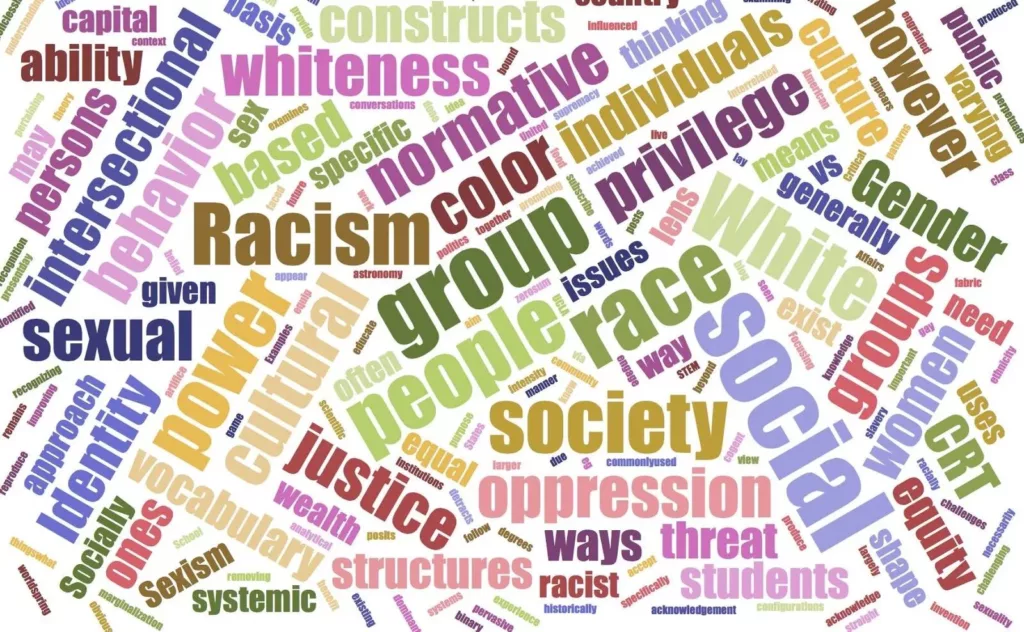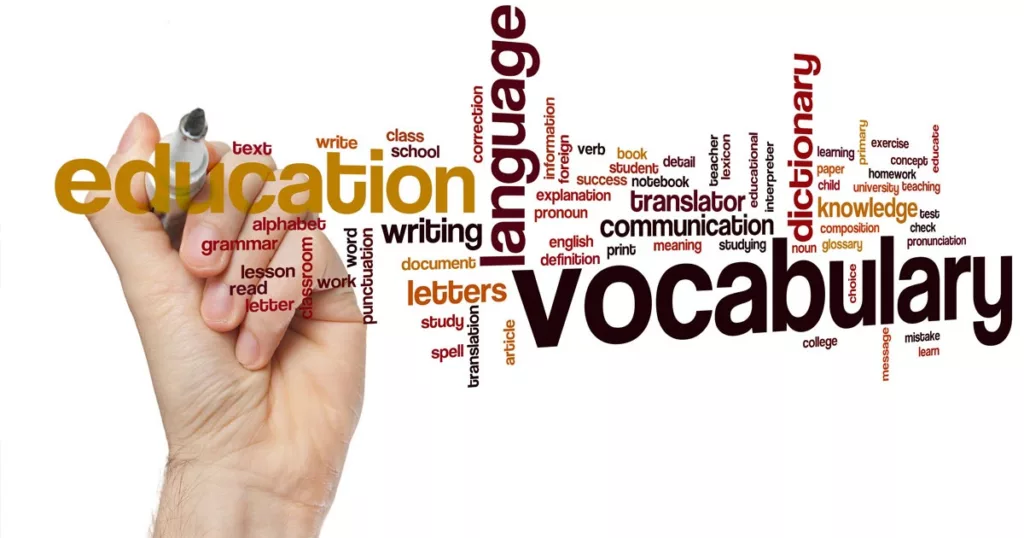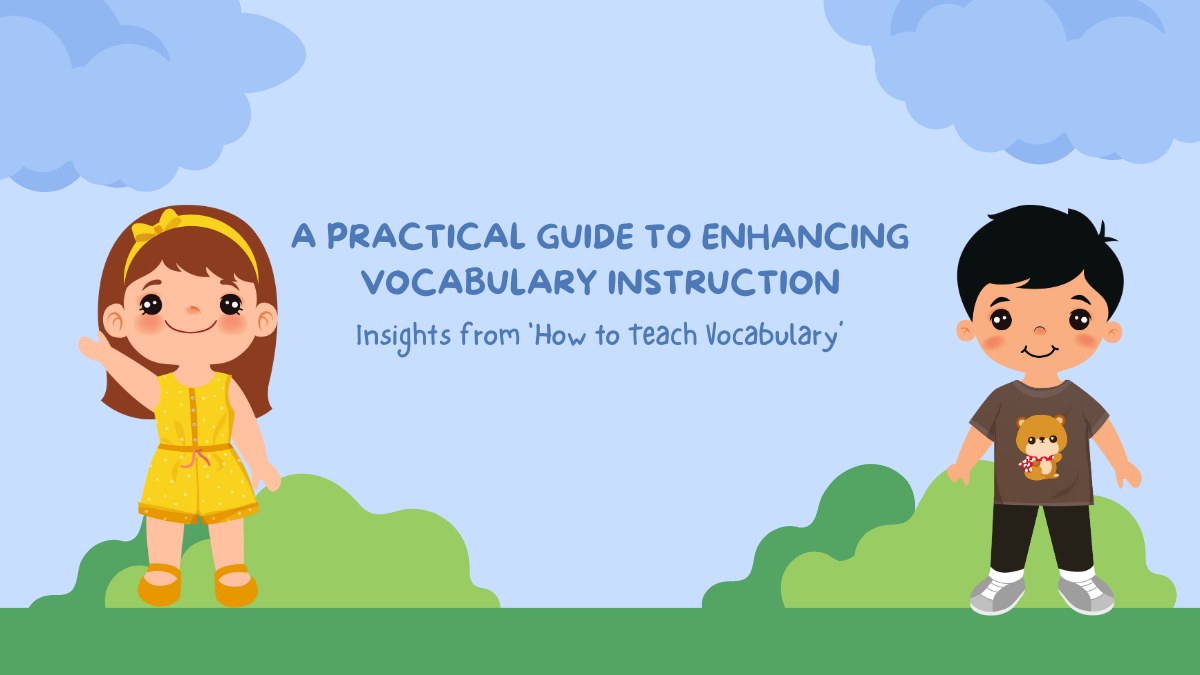A Practical Guide to Enhancing Vocabulary Instruction: Insights from How to Teach Vocabulary
The following piece delves into the art and science of vocabulary instruction, drawing insights from the seminal text, “How to Teach Vocabulary”. It aims to equip educators with a robust set of strategies and an in-depth understanding of lexical fields and word families, thereby enhancing their confidence and efficacy in teaching vocabulary. The guide elucidates on the theory of words, the process of vocabulary acquisition, and provides practical advice on innovative methods of vocabulary instruction and assessment. Whether you’re a seasoned educator or a novice teacher, the following content will provide you with a comprehensive roadmap to enriching your vocabulary instruction, ultimately fostering a more engaging and effective learning environment.
Introduction to Vocabulary Teaching

Words are the building blocks of language and are essential for effective communication. Vocabulary teaching, therefore, holds a crucial position in the realm of language instruction. However, traditional methods of rote memorization and isolated word lists have proven to be inadequate in developing students’ vocabulary skills. This has led to a shift in focus towards more innovative approaches that cater to the diverse needs of students and foster a deeper understanding of words and their usage.
Understanding Lexical Fields and Word Families

Lexical fields and word families are critical concepts in vocabulary instruction, facilitating a deeper, more interconnected understanding of words. A lexical field, also known as semantic field, refers to a group of words that are related in meaning. For instance, the words ‘book’, ‘page’, ‘chapter’, and ‘index’ all belong to the lexical field of ‘reading’. On the other hand, a word family is a group of words derived from the same root word, such as ‘run’, ‘runner’, ‘running’, ‘overrun’, etc. By teaching words in lexical fields and word families, rather than in isolation, educators can promote efficient vocabulary learning, encourage cognitive links between words, and foster a richer understanding of language semantics and structure.
How Students Learn Vocabulary

The process of vocabulary acquisition is multifaceted, involving the conscious and subconscious absorption of words. Students often learn vocabulary incidentally through extensive reading, listening to conversations, or being exposed to media in the target language. This passive learning can be supplemented with explicit instruction where words are intentionally taught through various teaching strategies like lexical fields or word families. Moreover, repetitive exposure to words in diverse contexts fortifies their understanding, aiding retention. Students also learn by using new words in their own speech or writing, which reinforces their understanding and usage. Importantly, fostering a positive and engaging learning environment can stimulate students’ interest and motivation, making vocabulary learning an enjoyable and fruitful experience.
New Strategies for Vocabulary Teaching

In the realm of vocabulary teaching, a myriad of innovative strategies have emerged that underscore practicality, engagement, and effective learning. One such approach is the use of semantic mapping or graphic organizers, where words are visually represented, showcasing their relationships and associations. This helps students to comprehend and retain words more effectively by leveraging their visual memory. Another strategy is the use of digital tools and apps that gamify the learning process, sparking interest and fostering a competitive spirit. Personalized learning platforms that adapt to a student’s level and pace of learning also facilitate vocabulary acquisition. Moreover, contextual learning where words are taught in the context of sentences or stories, rather than in isolation, promotes a deeper understanding of word meanings and usage. Additionally, encouraging students to engage in extensive reading, particularly in genres that interest them, can also significantly enhance their vocabulary. These strategies not only enrich students’ word bank but also foster a love for language learning.
Role of Language Corpora in Vocabulary Teaching

The role of language corpora in vocabulary teaching cannot be overstated. Language corpora, or large, structured sets of written or spoken texts, serve as an invaluable resource for vocabulary instruction. They provide authentic examples of language use, showcasing how words are used in various contexts, and the frequency of their usage, among other linguistic features. This enables educators to guide students towards the most relevant and commonly used vocabulary, ensuring efficient learning. Moreover, corpora can also be used to demonstrate the use of words in different lexical fields and word families, thereby enriching students’ understanding of language semantics and structure. With digital corpora becoming increasingly accessible, teachers can integrate these resources into their teaching strategies, enhancing the practicality and effectiveness of vocabulary instruction.
Testing Students’ Word Knowledge

Assessing students’ vocabulary knowledge is a crucial component of effective vocabulary instruction. Traditional vocabulary tests that simply require students to provide definitions of words or use them in sentences often fail to capture the depth and breadth of their word knowledge. A more holistic approach to vocabulary assessment involves examining not only the students’ recall of word meanings but also their understanding of word usage in various contexts, their knowledge of word families and lexical fields, and their ability to discern subtle nuances in word meanings. Tools like vocabulary notebooks, where students record new words along with their meanings, examples, and related words, can be used for assessment. Digital platforms that offer interactive quizzes or games can also be employed to make the evaluation process more engaging. Importantly, assessment should be ongoing and formative, providing regular feedback to students and helping educators tailor their teaching strategies to meet students’ needs.
Practical Exercises and Activities for Vocabulary Teaching

Practical exercises and activities are instrumental in facilitating active engagement and deepening students’ understanding of vocabulary. Word games such as ‘word bingo’, ‘crosswords’, or ‘word snakes’ not only make learning enjoyable but also reinforce word recognition and recall. Role-plays and skits can provide authentic contexts for using new vocabulary, thereby enhancing comprehension and usage. Collaborative tasks, like ‘pair work’ or ‘group discussions’, where students utilize new vocabulary in conversation, can foster interpersonal communication skills and boost vocabulary retention. Moreover, creative activities such as ‘writing short stories’ or ‘creating word posters’ cater to diverse learning styles and encourage students to explore words in depth. Lastly, the use of digital apps that offer interactive vocabulary exercises, quizzes, and games can cater to the tech-savvy generation, making learning more modern and interactive.
The Role of Technology in Vocabulary Teaching

Technology has infused a new dynamism into vocabulary teaching, making it more interactive, engaging, and adaptive. Digital language learning platforms offer students the benefit of personalized learning, adjusting to their unique pace and level of understanding. These platforms often incorporate features such as flashcards, interactive quizzes, and games that make vocabulary acquisition more enjoyable and efficient. Furthermore, online dictionaries and thesauruses provide students with immediate access to word meanings, synonyms, antonyms, and usage examples, thereby fostering independent learning. Also, language apps can offer the advantage of spaced repetition algorithms that strategically schedule word reviews to enhance long-term retention. In addition, technology enables the integration of multimedia elements such as images, audios, and videos, which cater to diverse learning preferences and aid in the deeper understanding and retention of words. Finally, with the availability of digital language corpora, students can observe authentic examples of word usage in various contexts, enriching their understanding of language semantics and structure.
Challenges in Vocabulary Teaching

While effective vocabulary teaching strategies and resources abound, educators also face certain challenges in this area. One of the primary challenges is the limited time available for vocabulary instruction within a packed curriculum. This often leads to a rushed approach, with teachers focusing on rote memorization rather than fostering deep understanding and usage of words. Additionally, in heterogeneous classrooms, teachers may struggle to cater to the diverse learning needs and preferences of students. Moreover, the English language’s complex spelling and pronunciation rules make it challenging for students to grasp vocabulary effectively. The ever-evolving nature of language also poses a challenge, with new words constantly being added to the lexicon, making it difficult for teachers to keep up with their students’ word knowledge. Lastly, in today’s fast-paced
Summary and Conclusions

In conclusion, vocabulary instruction is a vital aspect of language learning that requires a multifaceted approach. Incorporating authentic language resources like corpora, assessing students’ word knowledge through various means, utilizing practical exercises and activities, leveraging technology, and overcoming challenges are all crucial in ensuring effective vocabulary acquisition. As educators continue to explore new strategies and tools for vocabulary teaching, it is important to keep in mind the ultimate goal of enriching students’ understanding and usage of words, helping them become proficient communicators.

